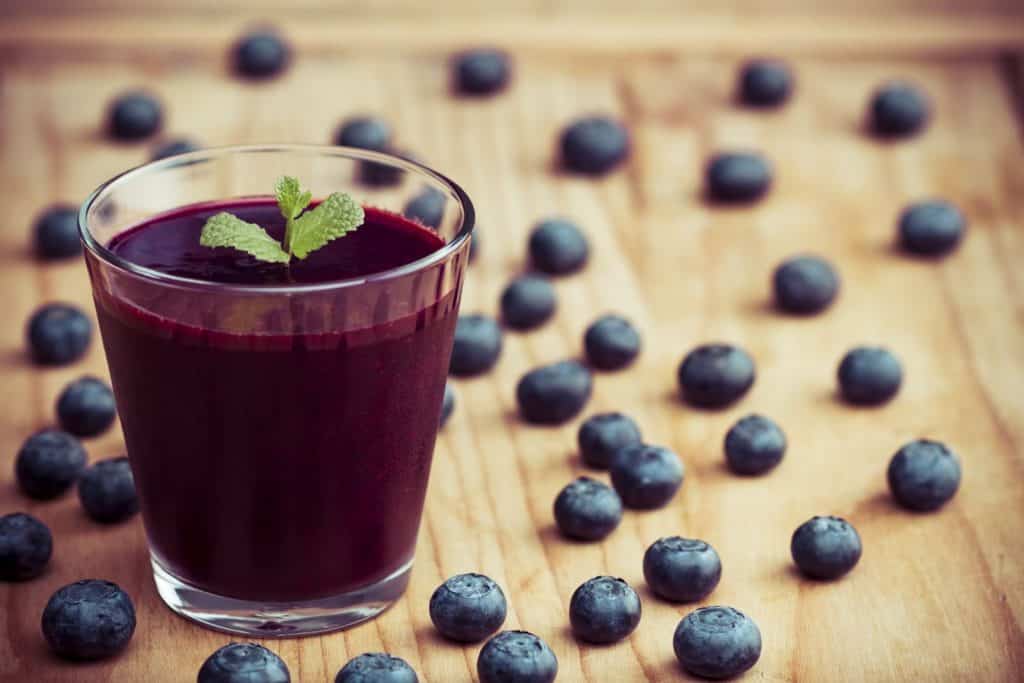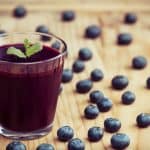
Fermentation is magical. This natural process turns milk into cheese, dough into bread, and cabbage into sauerkraut. The formula is simple: sugar + water + microbes = alcohol + carbon dioxide. When I realised how simple the process was, I was hooked. My kitchen soon turned into a giant lab with counters and cabinets filled with jars of homemade kimchi, sauerkraut, cheese, and yogurt.
My passion soon led me to experiment with brewing. I had so much fun making cider vinegar, beers, and wines that I was soon brewing up a storm! Lately, I have been trying out different types of mead. Mead, in its simplest form, is fermented honey, water, and yeast. The resulting brew is sweet, boozy, and reminiscent of summers!
You can check out my recipe of traditional honey mead. Towards the end of last summer, I experimented with making Morat or Mulberry mead and I am proud to say that my first batch turned out pretty awesome.
Encouraged by these results, I made blueberry mead next. Blueberries are available year-round these days and that really helps. You can use fresh or frozen berries for this recipe but freezing helps break open the cell walls of the fruit to release more juice.
The resulting drink is light and refreshing – it is a perfect beverage for warm summer evenings. Serve it up in a mason jar with a wedge of lemon and a handful of fresh berries. You will love it!
Note: blueberry mead takes time to make. Be patient and you will be rewarded!
Let us dive into the recipe of blueberry mead also known as blueberry honey wine or melomel.
Table of Contents
How to make blueberry mead
Equipment and Tools
Fermentation vessel
This is a truly essential piece of equipment and is a worthwhile investment to make. Always use a vessel that is at least 10% bigger than the size of your yield. This extra room, called headspace, is very important. The shape and the material of your vessel is entirely up to you.
Brewers usually go in for plastic bucket fermentation vessels or glass carboys. I personally like glass carboys as they are not prone to scratches – a common issue in plastic vessels.
This way, there is less room for growth of unwanted bacteria and fungi. You will be racking the mead (explained below) so you’d need at least 2 carboys.
Airlock and stopper
Glass carboys come with airlock and stopper. Alternatively, you can buy them separately.
These are universal-size stoppers that fit most 5-gallon carboys. These are essential to maintain the seal of the carboy to prevent debris from entering into the fermentation vessel.
Airlock also has a special mechanism to allow the bubbling gases to escape without letting air into the vessel.
Large stockpot
We will be heating up water in the stockpot, so make sure it is large enough to hold 3 gallons of water.
Bottling auto siphon
This siphon tube helps you siphon off or rack the mead into bottles while leaving the fruit bits, yeast cake, and other sediments at the bottom of your fermenting vessel.
Miscellaneous
You will need a large spoon or stirrer. Make sure you sterilize and sanitize all of the equipment you use. Place a clean towel on the surface on which you work. This will help you dry items when you need to.
You also need Red Star Cote des Blanc wine yeast.
Print
Blueberry Mead Recipe
- Total Time: 1 hour
Description
This recipe makes about 5-gallons of blueberry mead. You can adjust the quantity based on the size of your carboy. If you decide to follow this recipe, make sure to use 5 or 6.5 gallon carboys.
Ingredients
- Water – approximately 5 gallons
- Wildflower or clover honey (raw and organic) – about 11 cups or 8.25 lb
- 3 oz fresh ginger (optional)
- 2 lemons and 2 limes washed, cleaned, and dried.
- 4 tsp yeast nutrient
- One (5 g) packet of Red Star Cote des Blanc wine yeast
- ¾ cup corn sugar
- 1 gallon of frozen blueberries.
Instructions
- In the stockpot, simmer 3 gallons of water.
- Add honey and stir continuously so that it dissolves and does not stick to the sides and the bottom, burning.
- Continue to simmer the must. You will see white foam rise on top. Skim away the foam.
- Cut up or grate ginger and add it to the must. Continue to simmer.
- Remove the stockpot from the flame. Cut up lemons and limes into quarters or halves, squeeze their juice into the hot must, and drop in the used lime and lemon peels in as well.
- Next, add the yeast nutrient to the warm must.
- Drop in the frozen blueberries, cover the pot and let stand for 15 minutes.
- Remove the lemon and lime slices. Pour the must with the blueberries into a sanitized carboy or plastic bucket fermenter (whichever you are using). Add about 1.5 gallons of cool water to the carboy. Aerate and pitch the wine yeast into the carboy.
- Seal the carboy with airlock and stopper. Place the mead in a cool, dark place where it can remain undisturbed. Ambient temperature should ideally be about 70°F or 21°C.
- After 2 weeks, siphon the mead into a sanitized glass carboy or bottles. This process is called racking.
- Again after a week, siphon the mead into a sanitized bottle or carboy. Let the mead age for 3 months. At this point, you can dissolve corn sugar in a cup of warm water and add it to the carboy.
- Fill clean bottles with the mead and let it age for another month before enjoying.
- Prep Time: 60 minutes
Conclusion
Mead fermentation is slightly tricky because it can be tough to tell when it is done.
Sometimes, you may have a steady stream of bubbles for weeks only to find that the sample tastes cloyingly sweet. You can use a hydrometer to test the gravity and sugar content.
Always make sure that the yeast you add at the beginning is active and healthy. You can also pitch in new yeast with a yeast nutrient that is available readily on the market. I hope you give this recipe a try!

What is the purpose of the corn sugar? I when brewing beer its used for carbonation. Is this for the same use? This is the first time I’ve seen this step in a mead recipe.
Corn sugar is used for priming to make mead sparkling.
Can I use a different yeast like EC-1118 or D-47 with this recipe?
When do I add the corn sugar to the mead? Is it before or after aging?
Add corn sugar after 3 months of aging.